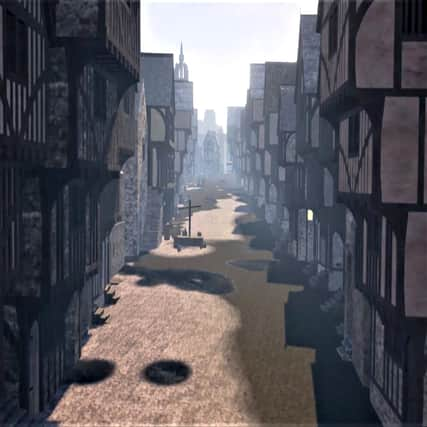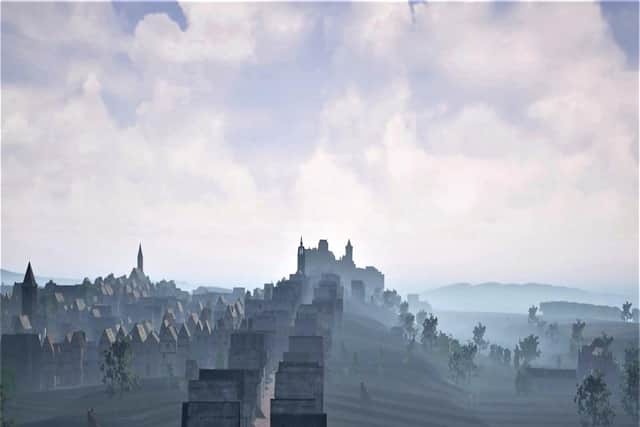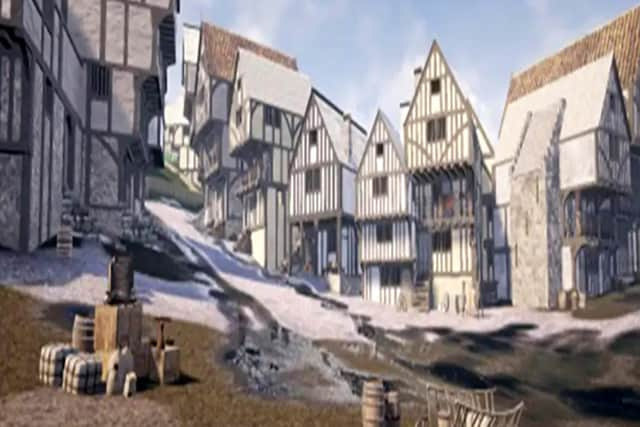'Groundbreaking' reconstruction of 16th century Edinburgh before burning by English forces released


The visualisation from May 1544 has been produced by Smart History, a spin out company of the University of St Andrews.
The Edinburgh 1544 Project looks at the city just before it was was surrounded by an army instructed by Henry VIII to invade Scotland in a bid to bring an end to the Auld Alliance with France.
Advertisement
Hide AdAdvertisement
Hide AdAngered too by the rejection of the Treaty of Greenwich, when Scots agreed that Henry’s son Edward would marry Mary Stuart, troops were sent north under the Earl of Hertford to ‘burn Edinburgh town’, and leave the Scottish capital ‘so razed and defaced’ that ‘there may remain forever a perpetual memory of the vengeance of God’.


Experts used a 16th Century drawing of Edinburgh which was made by a member of Hertford's party to bring the city to life just as it came under dangerous threat.
Archaeological data along with documents and insights from architectural and art historians were also used.
The full visualisation takes viewers on a tour of Holyrood, the Netherbow Port, St Giles Cathedral – which was then still a Catholic Church, West Bow (now Victoria Street), the Grassmarket and Cowgate.
Advertisement
Hide AdAdvertisement
Hide AdA project statement described the reconstruction as “groundbreaking”, adding: “The Edinburgh 1544 Project reconstructs the appearance of the Scottish capital on the eve of these momentous events.


"Inspired by a drawing in the British Library made by the English military engineer Richard Lee, who accompanied Hertford’s expedition, and took part in the sack of Holyrood, the reconstruction visualises the historic burghs of Edinburgh and the Canongate as they may have appeared just before Hertford’s forces arrived.”
At this time, buildings in Edinburgh were almost exclusively made of wood with the burning and looting by the army led by the Earl of Hertford, brother of Henry VIII’s third wife, Jane Seymour, the reason why much of the early city has not survived.
However, the English did not achieve in total destruction of the city and failed to capture the castle.
Advertisement
Hide AdAdvertisement
Hide AdThe statement added: “Fortunately for the residents of Edinburgh, the English failed to fully achieve their aims.
"A combination of Edinburgh’s natural geographic advantages, and determined defence by gunners based at the Castle, frustrated much of the English efforts. After harrying the Scottish capital for less than two weeks Hertford’s forces withdrew.”The English claimed that following their assaults on Edinburgh ‘neither within the walls nor in the suburbs was left any one house unburnt beside the innumerable bodies, pillages and spoils that our soldiers brought from thence’.
The statement added: “The reality was probably more complicated. Although Holyrood and the Canongate seem to have sustained significant damage, the extent of destruction in the heart of the burgh of Edinburgh is debatable.”Christina Sinclair, director of Edinburgh World Heritage, said: “These excellent visuals inform the best understanding of Edinburgh at a key point in its history.”
